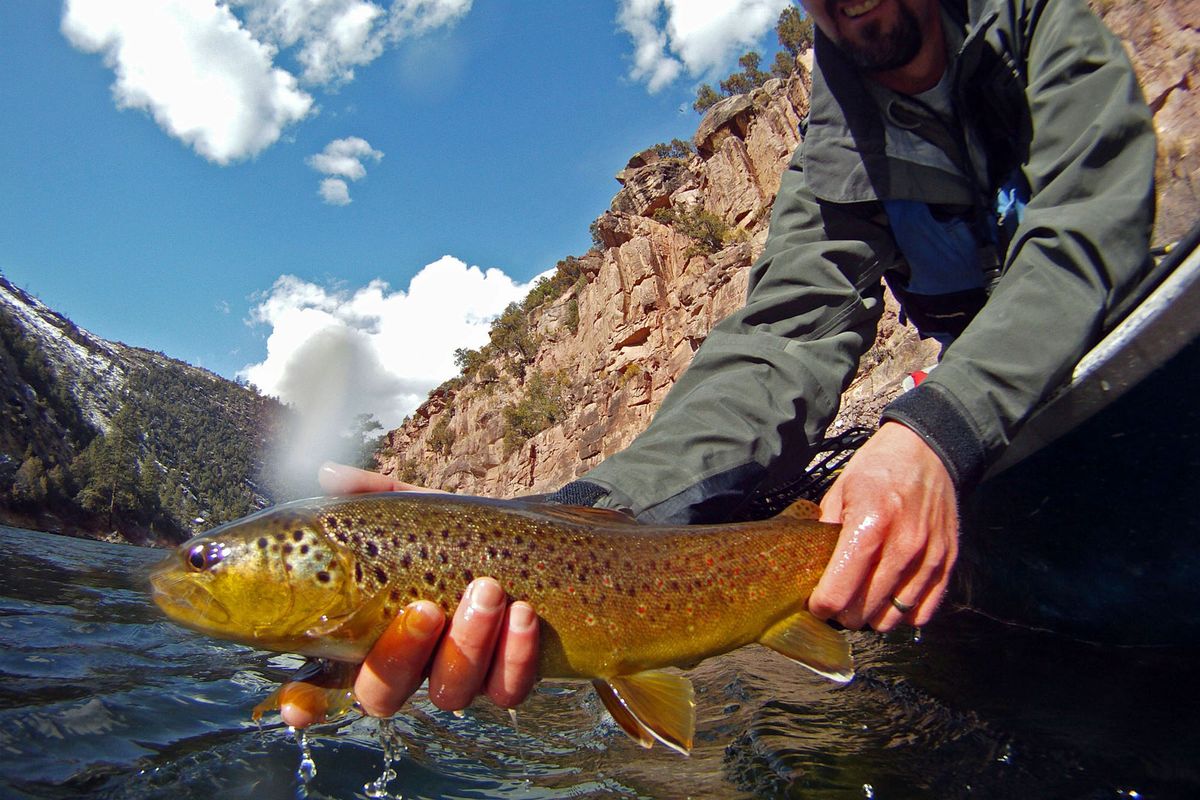Anglers go Green
Utah’s blue-ribbon trout stream lives up to all of the hype

“I was so focused on the fishing that I didn’t fully realize just how beautiful it was until I got back and looked at pictures,” said Bre Campbell, who spent her 25th birthday last fall floating the A-Section of Utah’s Green River.
She had good reason to miss some of the scenery as her group’s rafts headed down from Flaming Gorge Dam.
“I was expecting to see big fish, but not like that. They were everywhere around the boat,” she said.
The fish area a big draw to anglers in the West and around the world.
A 2005 statewide angler survey showed 198,000 angler days (four hours) spent on the northeastern Utah tailwater fishery. It’s a big river in a remote location with stunning scenery and a better-than-average chance of catching trout.
“Most people have heard the high numbers of fish per mile on the Green and that is a huge selling point to get them here, but the visual experience they encounter is what they remember,” said Darren Bowcutt, a guide for Western Rivers Flyfisher on the Green.
“People don’t just see the fish in the river or when they get them to the boat; they see the fish react to their fly, and that is a special thrill.”
Whether that fly is an oversized terrestrial pattern like an ant or a beetle or a fish-imitating streamer, the clear, cold water with a green hue makes it likely anglers will see a fish turn to the fly and then, if they are lucky, hit it.
About 14,000 trout per river mile – a staggering number that conjures up images of a fish hatchery – were recorded just below the Flaming Gorge Dam by the Utah Division of Wildlife Resources (DWR) last fall.
The waters around Little Hole, the boat ramps about seven miles downstream, average about 12,000 trout per mile. The number of fish per mile shrinks exponentially the farther from the dam you get.
The numbers in the lower stretches are in the hundreds.
Anglers must use artificial flies or lures. Rules allow fishermen to keep three trout (two under 15 inches and one longer than 22 inches), but they rarely do.
Ryan Mosley, a biologist with the Flaming Gorge/Green River Project, said 25,000 rainbow trout are stocked in the Green each spring. Many anglers joke that the planted fish are merely food for the big brown trout the river is famous for, but they don’t complain when one of the rainbows starts putting on a jumping exhibition on the end of their line.
Brown trout dominate the river, particularly in the lower stretches, surveys show. Last fall, 65 percent of the fish at the dam were browns. In the spring, the ratio of browns to rainbows below the dam is about 50-50.
At least one 9-pound fish usually shows up during the electroshocking surveys.
In 2008, the state planted 13,000 Colorado River cutthroat trout as fingerlings. The fish are growing, and some showed up in the fall electroshocking.
A remnant from the days when Snake River cutthroat trout were stocked in the river also showed up in the survey last year.
“We got a 7-pounder, so there are still a few of those guys swimming around,” Mosley said.
Thoughts of those big fish, and the place where they are found, are what keep anglers coming back to the Green.
“It is hard to explain to my friends what is so special about the river and the canyon. It is kind of surreal, kind of like you are totally immersed in nature,” Campbell said. “Sometimes I can’t sleep at night because I dream about the big fish there. I need to go back.”